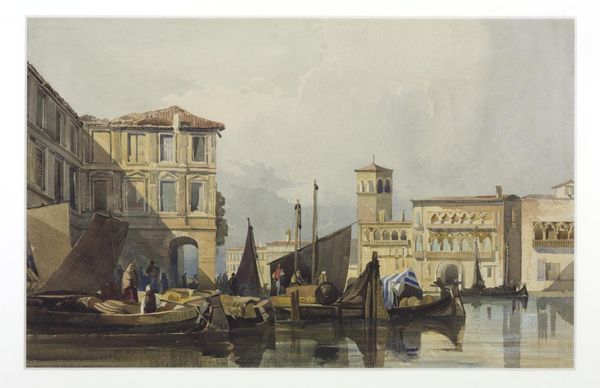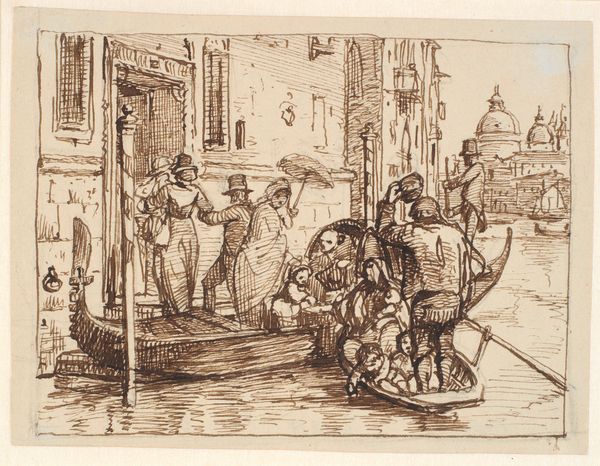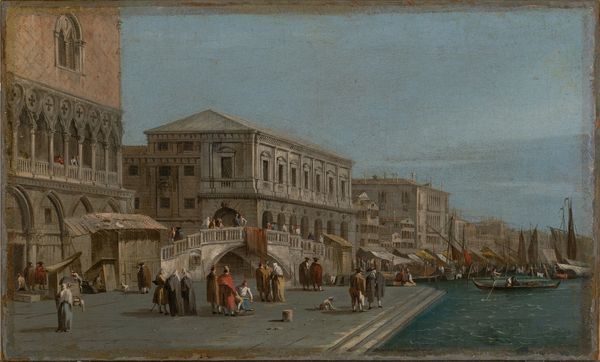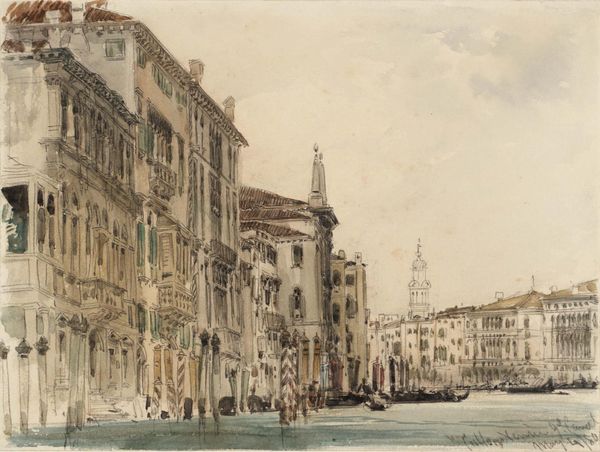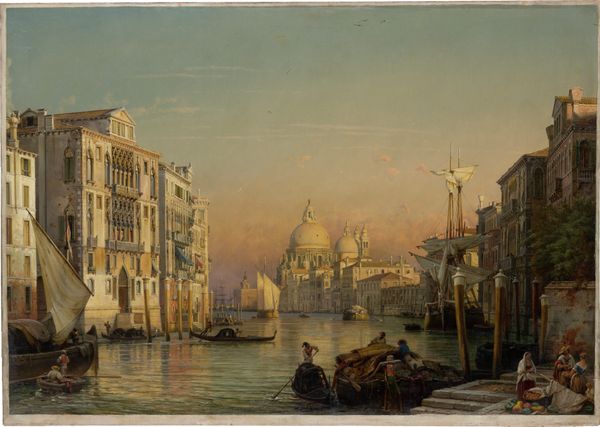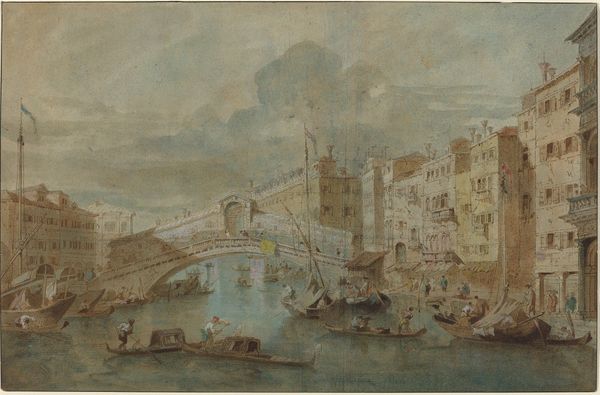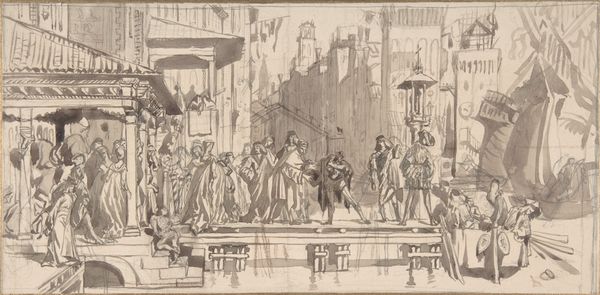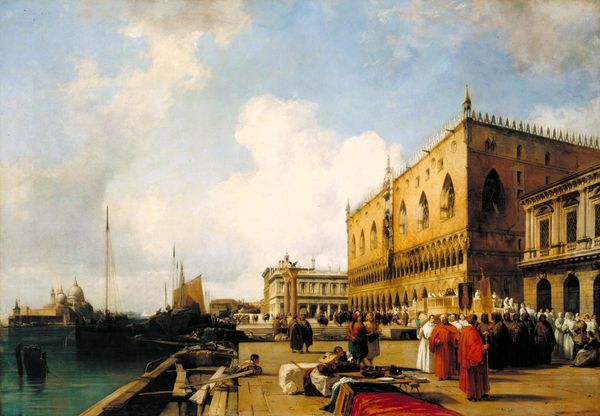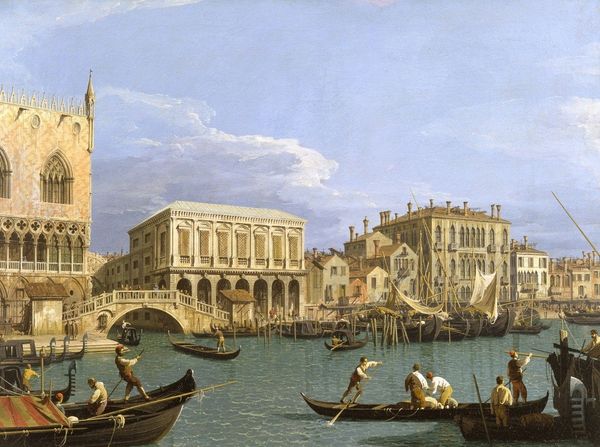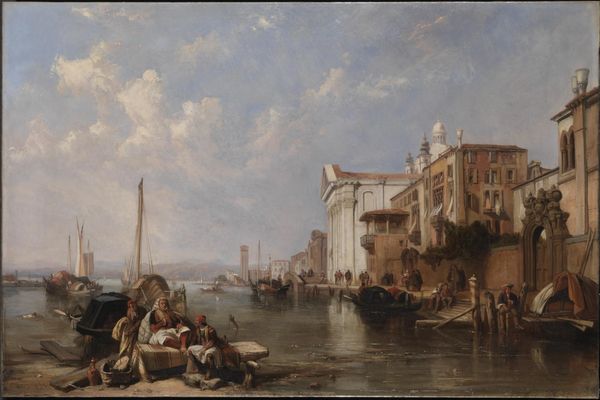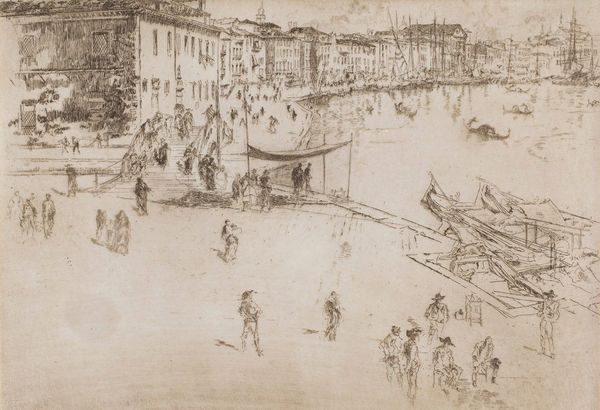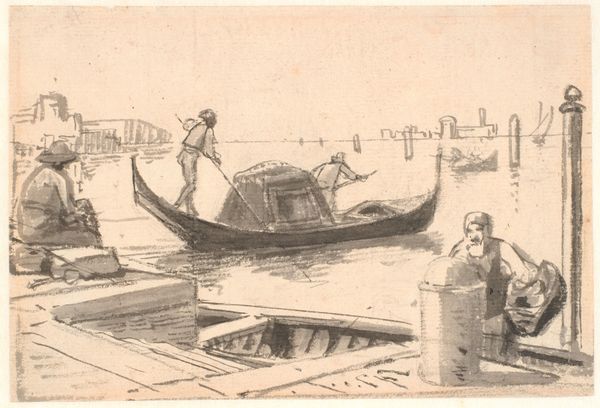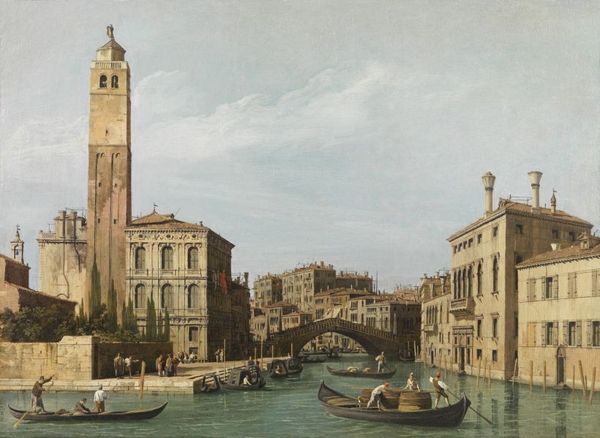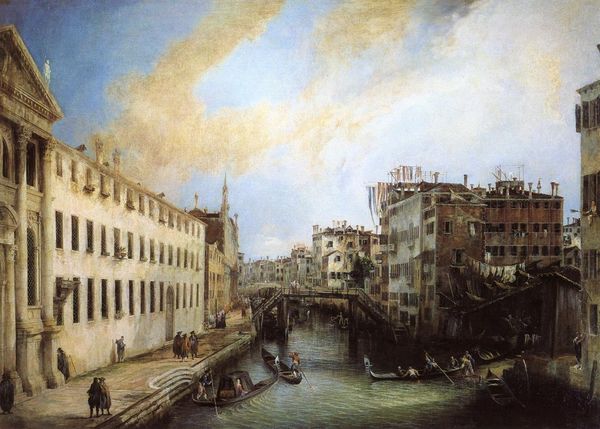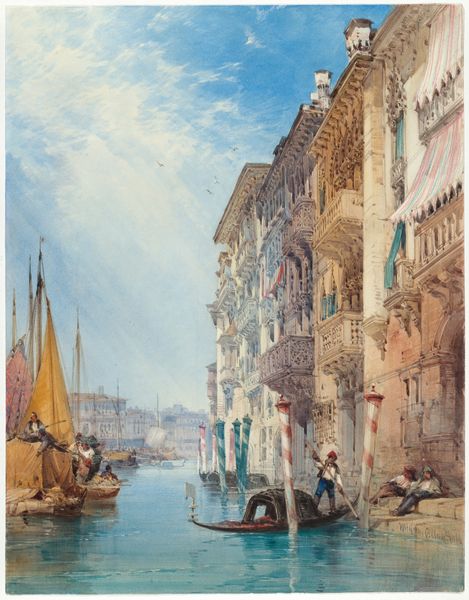
#
figurative
#
abstract painting
#
impressionist painting style
#
possibly oil pastel
#
oil painting
#
acrylic on canvas
#
street graffiti
#
underpainting
#
painterly
#
painting painterly
#
watercolor
Copyright: Public Domain: Artvee
Curator: So, let’s immerse ourselves in James Tissot’s "The Departure of the Prodigal Son," painted in 1863. The scene pulsates with unspoken tension against the backdrop of what seems to be a 16th-century Venice. Editor: Wow, first impression? Stage play! It feels incredibly staged, everyone posing, even the dog looks like he’s hitting his mark. What’s up with that vibe? Curator: The deliberate composition aligns with Tissot's tendency to address themes of social decorum, morality, and even subtle critiques of societal structures. We are witnessing a departure, not just geographically but, perhaps, morally. Note the opulence contrasted with the…reluctance. Editor: Reluctance is the perfect word! Everyone’s dressed to the nines, but that poor chap looks like he’s being pushed rather than jumping into that boat. I feel bad for him and, I dunno, strangely thrilled by the drama. Plus, look at those colors! Somber, yet strangely inviting. It feels like stepping into someone else's slightly faded dream. Curator: Indeed. This artwork resonates deeply when examined through a lens of familial expectations, especially considering patriarchal structures in the 19th century when Tissot created it. What obligations did young men carry, and what freedoms were they denied? And to whom were they responsible? Their parents or themselves? This young man might represent more than just a Biblical tale. Editor: You think he’s less the "prodigal son" and more like a reluctant actor in his own life? It’s like, he wants to bolt, but he's trapped by the weight of those disapproving gazes... Even now I wonder: where's he running to? Freedom or another kind of gilded cage? And, can I say? The water here really sells the movement. Even with this very posed composition. Curator: That inherent contradiction, that tension you are picking up, is precisely what makes Tissot's piece intriguing. The stagnant tableau belies the fomenting of an individual act of rebellion—or perhaps conformity dressed as rebellion. The painting is far more ambivalent than pious, despite the name. Editor: Agreed! And thanks to you I can now sense, beyond the staged formality, a universal discomfort of finding your own path when so many hands pull you elsewhere. Well, my own path beckons now…away from this gorgeous and melancholy moment of escape!
Comments
No comments
Be the first to comment and join the conversation on the ultimate creative platform.
